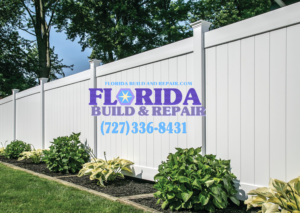Top Mistakes to Avoid When Installing a Vinyl Privacy Fence in Miami Beach
- Vinyl Privacy Fence Installation Coral Terrace, Vinyl Privacy Fence Installation Miami, Vinyl Privacy Fence Installation Miami Beach, Vinyl Privacy Fence Installation Miami Gardens, Vinyl Privacy Fence Installation North Miami, Vinyl Privacy Fence Installation Olympia Heights, Vinyl Privacy Fence Installation Surfside, Vinyl Privacy Fence Installation University Park, Vinyl Privacy Fence Installation Westchester
Installing a vinyl privacy fence in Miami Beach as a DIY project or even with professional help can seem straightforward, but there are several pitfalls that can lead to wasted time, money, or a subpar fence. Vinyl’s rigid design and precise assembly requirements make errors particularly costly. Below are the top mistakes to avoid when installing a vinyl privacy fence, drawn from common issues faced by homeowners and installers, along with practical tips to prevent them.
1. Failing to Verify Property Lines
- Mistake: Assuming you know your property boundaries and installing posts without confirmation.
- Consequences: You might encroach on a neighbor’s land, leading to disputes, legal action, or the need to remove and reinstall the fence.
- How to Avoid:
- Check your property deed or plat map (available at your local recorder’s office).
- Hire a professional surveyor for accuracy (costs $300-$800 but prevents headaches).
- Discuss plans with neighbors to ensure agreement, especially for shared boundary fences.
- Mark lines clearly with stakes and string before digging.
2. Ignoring Local Regulations and Permits
- Mistake: Starting installation without researching zoning laws, HOA rules, or permit requirements.
- Consequences: Many areas limit fence heights (e.g., 6 ft max for backyards) or require setbacks. Unpermitted fences may need to be torn down, and you could face fines ($100-$1,000).
- How to Avoid:
- Contact your local building department or HOA for guidelines on height, materials, and permits (permits cost $0-$200).
- Call 811 (U.S.) at least 3 days before digging to mark utility lines (free service).
- If hiring a contractor, confirm they’re pulling permits—don’t assume they will.
3. Misaligning or Incorrectly Spacing Posts
- Mistake: Setting posts too close, too far apart, or not plumb (vertically straight).
- Consequences: Vinyl panels are rigid and designed for exact post spacing (e.g., 8 ft on-center for 8-ft panels). Misaligned posts mean panels won’t fit, requiring you to dig up and reset posts, wasting concrete and time.
- How to Avoid:
- Measure twice before digging—use a tape measure and mark post centers with paint.
- Run a string line between corner stakes to keep posts in a straight line.
- Dry-fit panels before pouring concrete to confirm spacing.
- Use a level on two sides of each post to ensure it’s plumb. Brace with 2x4s while concrete cures (24-48 hours).
4. Digging Post Holes Too Shallow or Too Wide
- Mistake: Skimping on hole depth (less than 2 ft) or making holes too wide, reducing stability.
- Consequences: Shallow posts wobble or lean over time, especially in windy areas or soft soil. Overly wide holes waste concrete and weaken the base.
- How to Avoid:
- Dig holes 2-3 ft deep (check frost line in cold climates, often 3 ft) and 10-12 inches wide.
- Add 4-6 inches of gravel at the bottom for drainage and stability.
- Use a post-hole digger or rent an auger for consistent holes ($50-$100/day).
- For loose soil or high-wind areas, go deeper (3-4 ft) and use more concrete.
5. Not Accounting for Terrain
- Mistake: Installing panels without adjusting for slopes, uneven ground, or obstacles like trees.
- Consequences: Gaps under panels reduce privacy, and uneven panels look sloppy. Forcing panels to fit slopes can crack them.
- How to Avoid:
- For slopes, choose stepped panels (fixed height, stepped down) or rackable panels (angle to follow ground). Check your kit’s specs.
- Measure each section’s height to account for dips or rises.
- Trim panels with a circular saw for obstacles, but measure carefully—vinyl cuts are permanent.
- Add lattice or trim at the bottom to close gaps if needed.
6. Pouring Concrete Too Early
- Mistake: Setting all posts in concrete before test-fitting panels.
- Consequences: If posts are slightly off (even by 1/2 inch), panels won’t slide into slots, forcing you to break up concrete and start over.
- How to Avoid:
- Set corner and end posts first, let them cure (24-48 hours), then dry-fit panels between them.
- Install remaining posts one at a time, fitting a panel before pouring concrete for the next post.
- Adjust posts slightly during dry-fitting to ensure a snug fit.
7. Forcing Panels or Over-Tightening Hardware
- Mistake: Hammering panels into slots or over-tightening screws/bolts during assembly.
- Consequences: Vinyl can crack or warp under pressure, ruining panels ($100-$200 each to replace). Over-tightened hardware stresses joints, leading to breaks.
- How to Avoid:
- Use a rubber mallet to gently tap panels into place if they’re snug.
- Follow manufacturer instructions for screws (often hand-tighten only).
- If a panel doesn’t fit, check post alignment—don’t force it.
- Keep panels level during installation to avoid stress.
8. Skipping Gravel or Drainage
- Mistake: Setting posts directly in soil or neglecting drainage in holes.
- Consequences: Without gravel, water pools around posts, causing concrete to crack or posts to shift. Soil contact can degrade even vinyl posts over time.
- How to Avoid:
- Add 4-6 inches of gravel to each hole’s base before setting posts.
- Slope hole bottoms slightly to direct water away.
- Fill gaps around posts with soil or gravel after concrete cures to prevent pooling.
9. Poor Gate Planning
- Mistake: Installing gates that are too narrow, swing the wrong way, or use weak hardware.
- Consequences: Narrow gates (under 4 ft) block equipment like mowers. Poorly placed gates hinder access, and cheap hinges/latches fail quickly, causing sagging.
- How to Avoid:
- Plan gate locations in high-traffic areas (e.g., near driveways).
- Use heavy-duty gate posts (often included in kits) and set them deeper (3 ft).
- Choose gates at least 4 ft wide with sturdy, adjustable hinges and self-closing latches.
- Test gate swing direction (inward/outward) before setting posts.
10. Underestimating Time or Help Needed
- Mistake: Rushing the project solo or assuming it’s a one-day job.
- Consequences: Vinyl panels are heavy (50-100 lbs), and tasks like digging, leveling, and fitting require precision. Rushing leads to crooked posts or uneven panels. Solo work risks injury or delays.
- How to Avoid:
- Budget 2-4 days for a 100-ft fence with two people.
- Enlist a partner to hold posts, lift panels, or check levels.
- Break the project into stages (e.g., day 1: layout/dig; day 2: set posts; day 3: panels).
- Rent tools like an auger to save time ($50-$100/day).
Bonus Mistake: Choosing Low-Quality Vinyl
- Mistake: Buying the cheapest vinyl kit to save money.
- Consequences: Low-grade vinyl fades, cracks, or warps within a few years, requiring costly replacements. Thin panels (under 0.15 inches thick) are flimsy.
- How to Avoid:
- Invest in mid-to-high-quality kits (e.g., Veranda, Freedom, or CertainTeed, ~$25-$40 per linear foot).
- Check reviews for UV resistance and thickness (0.15-0.2 inches for panels).
- Ask suppliers for samples to test durability.
- Look for warranties (10-20 years common for good brands).
Pro Tips for Success
- Start with Corners: Set corner and end posts first to anchor the layout, then work section by section.
- Use a String Line: Keeps posts straight and panels aligned across long runs.
- Dry-Fit Everything: Test panels before concreting posts to catch errors early.
- Confederacy**: Watch brand-specific tutorials on YouTube (e.g., “Veranda vinyl fence install”) for kit quirks.
- Rent Tools: An auger or laser level saves hours and ensures accuracy.
- Check Weather: Avoid windy days (panels catch wind) or rain (messes with concrete).
When to Rethink DIY versus professional Miami Beach Vinyl Privacy Fence Installation
If you hit these red flags, consider hiring a pro ($40-$100 per linear foot):
- Steep slopes or complex terrain (e.g., rocky soil, trees).
- No access to tools or help.
- Tight timeline or lack of confidence in measuring/levelling.
- Complex permit requirements.

Miami Beach Wood Privacy Fence Installation: Choosing the Right Wood
Choosing the right wood for a privacy fence installation in Miami Beach involves considering several factors, including durability, maintenance requirements, aesthetic appeal, and budget. Here

Miami Privacy Fence Installation on a Budget: Affordable Options
As of 2025, Miami homeowners looking to enhance their privacy while maintaining budget constraints have several viable fencing options. The average fence installation in Miami

Privacy Fence Installation on a Budget in Florida: Affordable Options
According to recent data, the average privacy fence in Florida costs between $1,800 and $8,000, depending on materials, size, and installation method. For homeowners seeking

Is Vinyl Privacy Fence Installation in Surfside Right for You?
Deciding whether a vinyl privacy fence installation in Surfside is right for you depends on your needs, budget, property, and preferences. Vinyl fences are popular

Vinyl Privacy Fence Installation in Coral Terrace: Cost, Tips, and Benefits
Installing a vinyl privacy fence in Coral Terrace is an excellent way to enhance your yard’s security, seclusion, and aesthetic appeal. Its durability and low

How to Install a Vinyl Privacy Fence in University Park Like a Pro
Installing a vinyl privacy fence in University Park like a professional requires meticulous planning, precise execution, and attention to detail. Vinyl’s durability and low maintenance

Top Mistakes to Avoid When Installing a Vinyl Privacy Fence in Miami Beach
Installing a vinyl privacy fence in Miami Beach as a DIY project or even with professional help can seem straightforward, but there are several pitfalls

DIY Vinyl Privacy Fence Installation in Miami: What You Need to Know
Installing a DIY vinyl privacy fence in Miami is a rewarding project that boosts your yard’s privacy and curb appeal with minimal upkeep compared to

Step-by-Step Guide to Vinyl Privacy Fence Installation in Westchester
Installing a vinyl privacy fence in Westchester is a manageable project if you plan carefully and follow a clear process. Vinyl is durable, low-maintenance, and

How Long Does Miami Fence Installation Take? A Timeline Breakdown
Timeline Breakdown for Miami Fence Installation The time required for fence installation in Miami can vary based on several factors, including the size of the

Step-by-Step Guide to Miami Vinyl Privacy Fence Installation
Here’s a step-by-step guide for installing a vinyl privacy fence in Miami: Planning and Preparation Materials and Tools Needed Installation Process Step 1: Dig Post


